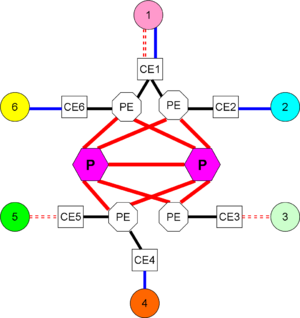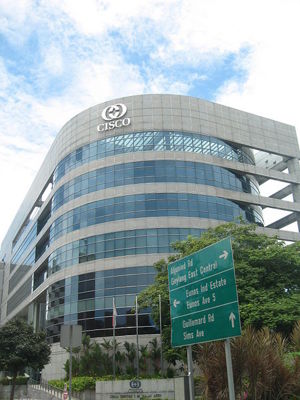User talk:Thomas Wright Sulcer/sandbox7
Temporary file:
(would be great to get permission to upload covers of HB books)
Possible article title: Howard C. Berkowitz

Howard C. Berkowitz is an expert on numerous computer network related subjects such as routers, network engineering, information security, medical information systems, and other areas, and has published books on these subjects. Some of his books are used in graduate level courses at universities as textbooks. He has helped build large networks and has worked as a consultant for private industry as well as the US federal government. He has two patents pending. He is also a significant contributor to the online encyclopedia Citizendium, a Wikipedia-like project which values experts and insists that contributors use their real names, and has served in top management and editorial roles at Citizendium. He is a prolific writer and loves to teach. He has wide interests including electronics for commercial fishing, cloud computing, renewable biodiesel applications, environmentally friendly methods, clinical computing, commercial fishing, journalism, pharmacology, emergency management, and learning new things. He volunteers with the Incident Command System and the Federal Emergency Management Agency. He loves cats and fishing and lives in Cape Cod, Massachusetts.
Early career
Berkowitz was born in Newark, New Jersey after World War II. While in high school, he was interested in biochemistry, including pathogens, and found a mentor skilled in medicine, microbiology, and biochemistry; he did a research proposal regarding notalysin and finished this in college. He wrote:
| ‘ | It probably was just as well that my mother did not know all of what was in my basement lab. No, no explosives, just pathogens -- I later did make some improvised things that went bang, but that was under guidance while a contractor working with U.S. Army Special Forces. | ’ |
In his early career, he worked in microbial biochemistry, emergency management, and social science support to special operations. During the Vietnam War, he helped build tactical sensors. He was trained in intelligence analysis. He was a technical contributor to the national network architecture known as "C3I". He was the chief developer of clinical computing at Georgetown University Hospital and worked with systems such as Index Medicus to simulate a doctor's expertise.[1] He has two patents pending.
He worked at GTE on the insides of telephone networks. He was a member of the Federal Telecommunications Standards Committee from 1976 to 1980). He worked on ways to keep military telecommunications networks functioning after an attack or disruption. He wrote:
| ‘ | The US National Communications Systems and military networks were intended to operate under the most extreme conditions ... the network really needed to operate for 20 minutes or so, but you never knew when the 20 minutes would start, and would just have to cope with network elements randomly turning into mushroom clouds. | ’ |
He worked with systems and protocols including FTSC, ANSI, DISY, OSI, ISO 7498, and OSIRM.
He was the first technical staff member at the Corporation for Open Systems. This was a nonprofit industry research center to develop OSI and ISDN protocols. He managed numerous teams and committees on such systems as FTAM, X.25, IEEE 802. He wrote One memorable experience was lecturing about X.25 testing in Japan:
| ‘ | I had the horrible realization that my PowerPoint slides, translated into Japanese, had gotten into a different order than my English-language notes. | ’ |
But he finished the presentation with the help of a multilingual colleague.Template:Citation needed
Network expertise

When the Internet became more important in the early 1990s, he worked with the Internet Engineering Task Force to build Internet protocols. He worked with the North American Network Operators Group or NANOG and the Internet Research Task Force or IRTF. His focus was on routing, particularly with BGP/IDR and OSPF, and Operations & Management, particularly BMWG & OPSEC, as well as network security, real-time applications, and infrastructure.
At Nortel, Berkowitz was a product line manager who worked on communications standards for networks commonly called protocols. He was promoted to Senior Advisor in Nortel's corporate research laboratory and worked on Internet protocol routing. He spoke at the Internet Society meeting in Stockholm on the subject of the limits of the Internet routing system. He helped design state-of-the-art routers.
At Cisco, he taught Internetwork Design which is a way to merge different networks efficiently into a functioning system. His specialties were fault tolerance, router design, network management. He worked on systems for telecommunications, Internet Service Providers (or ISPs), military such as C3I-ISR, and medicine.
In network engineering, Berkowitz worked in:
- communications standards. This enables computers from different manufacturers to be able to talk to each other. He's worked with standards such as ISO/CCITT and ANSI.
- designing routers; a router is like a traffic light of a computer network since it manages data traffic to prevent jams.
- building systems to manage networks. He designs systems to enable firms to handle large volumes of data traffic efficiently.
- designing networks for large service providers
- enterprise networks
Writing, speaking
Berkowitz wrote:
- WAN Survival Guide: Strategies for VPNs and Multiservice Networks (2000) (John Wiley & Sons) # ISBN-10: 0471384283 # ISBN-13: 978-0471384281[2] The book helped managers of Wide Area Networks by helping them assess user requirements, lower costs by using multiservice networking, reducing downtime, managing QoS, using dedicated lines and frame relay and ATM to provide basic services, help managers handle virtual private networks or VPNs, manage security, roaming, mobility, and database fault tolerance and multihoming. The book was described by several reviewers as an "excellent resource."[3]
Another reviewer wrote: {{quote|These topics could be a dry, academic exercise, but (as usual) Howard Berkowitz spices the material with "war stories" of actual WAN technology assignments (and why the customers didn't really want they just asked for) and the injection of humor as a means of remembering rules (such as Schwarzenegger's Laws of Networking).[4] The book is an excellent "place to start" for people wanting to learn more about what's "inside the cloud".
- Building Service Provider Networks(2002) John Wiley & Sons, ISBN-10: 0471099228 ISBN-13: 978-0471099222[4] This book offered guidance to network and service provider engineers to help them meet customer needs regarding data, voice, and video. It showed them how to build information systems. The first step is translating customer needs into technical requirements. The next step is managing address space. The book dealt with issues such as data link facilities, core transmission technologies, using the Border Gateway Protocol (and applying it to meet specific customer needs), designing the Point of Presence carrier, scalability of the intraprovider core, interprovider connectivity, and extending Virtual private networks beyond a single provider for maximum efficiency. A reviewer of the book wrote:
| ‘ | Howard Berkowitz is known in the networking community for his writing which has helped many, many people earn advanced certifications. But Howard doesn't write to that goal; he writes, instead, to the goal of helping people understand what it takes to make a network actually perform and deliver the business function it was purchased for. This is another in that series of lucid and focused books. -- A. A. Hines, senior network engineer.[5] | ’ |
It is used as a textbook at the Victoria University at Wellington in New Zealand in its school of Engineering and Computer Science.[6]
- Industry presentations, speeches, conferences.
- Tutorials on routing for the North American Network Operators Group.[3]
- He wrote Internet Engineering Task Force RFCs as author or co-author, including RFC 1912 and RFC 2071.[7],
He lives in Cape Cod, Massachusetts.
References
- ↑ Template error: argument title is required.
- ↑ Howard Berkowitz. WAN Survival Guide: Strategies for VPNs and Multiservice Networks, Amazon, November 10, 2000. Retrieved on 2010-03-14.
- ↑ 3.0 3.1 Bandwidth Solutions For Hungry Companies, Router Freak: Router and Switch Reviews and Tips for Network Engineers, 2010-03-14. Retrieved on 2010-03-14.
Cite error: Invalid
<ref>tag; name "twsMar14o" defined multiple times with different content - ↑ 4.0 4.1 Howard strikes again -- WAN Survival Guide: Strategies for VPNs and Multiservice Networks by Howard Berkowitz (review), Amazon, March 24, 2001. Retrieved on 2010-03-14.
Cite error: Invalid
<ref>tag; name "twsMar14q" defined multiple times with different content - ↑ A. A. Hines. Too bad so many startups never read this book, Amazon, December 13, 2002. Retrieved on 2010-03-14.
- ↑ [http://ecs.victoria.ac.nz/Courses/NWEN403_2010T1/CourseOutline NWEN 403: Advanced Network Engineering Course Outline 2010 Tri 1 -- Textbook -- Howard Berkowitz, Building Service Provider Networks], Victoria University at Wellington, 2010-03-14. Retrieved on 2010-03-14.
- ↑ Ferguson, P & H Berkowitz (1997), Network Renumbering Overview: Why would I want it and what is it anyway?, IETF, RFC2071
- ↑ Berkowitz, H (1997), Router Renumbering Guide, IETF, FDR
- ↑ Berkowitz, H; E Davies & S Hares et al. (2005), Terminology for Benchmarking BGP Device Convergence in the Control Plane, IETF, RFC4098
